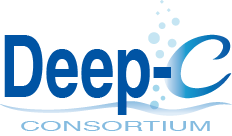SENSE IT Teacher Workshop on Water Monitoring
|
|
Posted March 12, 2013
| Share | Tweet |
Tallahassee-area middle and high school science teachers gathered at the FSU Coastal & Marine Laboratory on March 9 for an all-day workshop on building water temperature sensors. The workshop was part of the Student Enabled Network of Sensors for the Environment using Innovative Technology (SENSE IT) project developed through the National Science Foundation and was co-hosted by the C-IMAGE and Deep-C consortia.
SENSE IT brings real world environmental sensor networks into the high school classroom. During the workshop, teachers learned how to construct and calibrate sensors using multimeters, thermistors, and other electrical materials. They also received supplies and instructions for building sensors with their students back in their classrooms where they will be challenged to design, build, deploy and interpret data from their own environmental sensors.
The sensor construction lessons incorporate a variety of disciplines, including science, engineering, math, and computer programming, and give students real-world exposure to the scientific process. Once teachers and students have gone through the initial water temperature sensor exercises, additional lesson plans are available through the SENSE IT website on how to make other types of environmental sensors.
| During the workshop, teachers learned how to construct and calibrate sensors using multimeters, thermistors, and other electrical materials. See more photos from March 2013 the workshop. |
||
Ms. Liesl Hotaling led the workshop, and Deep-C science director Dr. Felicia Coleman stopped by to give the teachers a presentation about the Gulf of Mexico and the effects of the Deepwater Horizon oil spill. The teachers were also given a tour of the new Marine Lab’s new research vessel – the RV Apalachee – by Marine Lab carpenter Dan Overlin. Deep-C’s Meredith Field assisted with the workshop.
For more information about SENSE IT and upcoming SENSE IT workshops, visit http://senseit.org/ or This email address is being protected from spambots. You need JavaScript enabled to view it..
The Deep-C (Deep Sea to Coast Connectivity in the Eastern Gulf of Mexico) Consortium is a long-term, interdisciplinary study of deep sea to coast connectivity in the northeastern Gulf of Mexico. The study is investigating the environmental consequences of petroleum hydrocarbon release in the deep Gulf on living marine resources and ecosystem health. The C-IMAGE (Center for Integrated Modeling & Analysis of Gulf Ecosystems) Consortium is seeking to improve the observational and predictive tools available; to better understand the Deepwater Horizon event in hindsight; and to predict the consequences of another deep-sea blow out in the Gulf of Mexico or elsewhere. Deep-C and C-IMAGE research is made possible by a grant from BP/The Gulf of Mexico Research Initiative (GoMRI). The GoMRI is a 10-year independent research program investigating the effects of the Deepwater Horizon incident.
Deep-C was a four-year, interdisciplinary study of deep sea to coast connectivity in the northeastern Gulf of Mexico.Deep-C is no longer an active research project. The information on this website is for historical reference purposes only.
Home | About Us | Research Areas | Data Center | News & Multimedia | Education & Outreach
© Deep-C Consortium. All Rights Reserved.
This research was made possible by a grant fromThe Gulf of Mexico Research Initiative (GoMRI).
Copyright | Disclaimer | Privacy Policy
